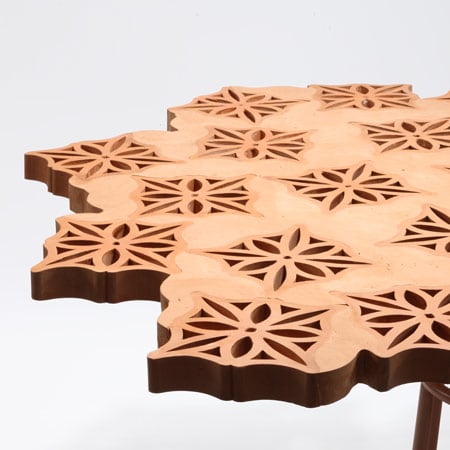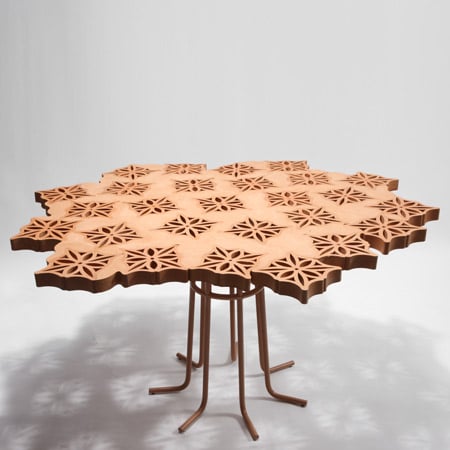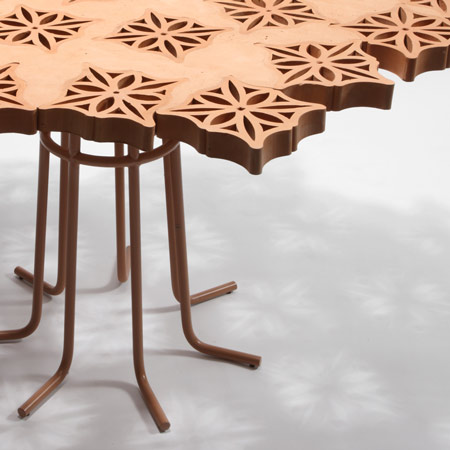
Tavolo Cobogó by the Campana Brothers
At Object Rotterdam in the Netherlands last week Brazilian designers Fernando and Humberto Campana exhibited a terracotta table made of decorative ventilation bricks commonly used in Brazilian houses.

Called Tavolo Cobogó, the design uses the bricks, called Cobogó, to create a decorative table top that casts patterned shadows on the ground.

Created for Italian gallery Plusdesign, the table was first shown at the Salone del Mobile di Milano last year.
Photographs are by Sebastiano Pellion di Persano.
Here's some more information from Plusdesign:
--
Fernando and Humberto Campana have created the Cobogó table for Plusdesign. The Cobogó is a common ceramic perforated tile used in many Brazilian buildings, mainly in the 20th century with the Modernist Movement in architecture. The cobogo plays the role of a bricks on a wall, as to allow air circulation and sunlight inside homes, a thermal comfort solution. The word itself is an acronym for Coimbra, Boeckmann and Góis, their creators. Like many of Campana Brothers’ pieces, this is an attempt to subvert its regular usage that transposes it to a completely new environment. The result is a horizontal top for a delicate floating dinning table.
Since 1983, the brothers Fernando (1961) and Humberto (1953) Campana have been solidly building their career achieving both national and international recognition. Their work incorporates the idea of transformation and reinvention. Giving preciousness to poor, day-to-day or common materials carries not only the creativity in design, but also very Brazilian characteristics – the colors, the mixtures, the creative chaos, the triumph of the simple solutions. Based in Sao Paulo, Estudio Campana is constantly investigating new possibilities in furniture making, also working in partnership with communities, factories and industries. In 1998, curated by Paola Antonelli, they exhibited in New York MoMa, the “Project 66”, their first international show in a duo with Ingo Maurer. They work with both international industries – Edra, Alessi, Fontana Arte and national – Grendene for their unlimited edition pieces. In 2002, the Estudio Campana started crafting its own line of special editions, which are now integrating permanent collections of renowned cultural institutions such as the MoMa in New York, the Centre Georges Pompidou in Paris or the Vitra Design Museum in Weil am Rhein, Germany.
Production: Edizioni Plusdesign 2009
Materials: terracotta, resin, varnished steel
Dimensions: height 74 - diameter 137